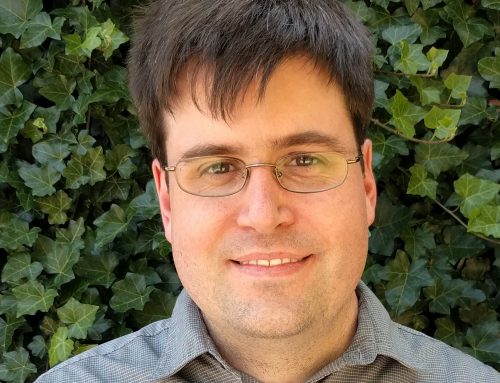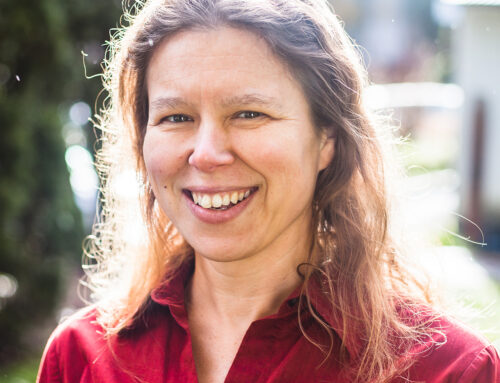A lot of what we learn and believe has come from textbooks. They contain a great deal of information from experts in various fields. And because they are so influential, a great deal of debate about their content has ensued, especially on controversial topics. However, I do not want to discuss the debates about the various facts and claims in textbooks. I propose that the reason textbooks lie is not in what they say but in the way they say it. My problem with textbooks is not their content but their existence.
To understand the problem, compare reading literature to studying mathematics or science. Students studying literature are often asked to interact with the books they read. Maybe they write book reports or papers, or they discuss the book with others. This is an unstated assumption: the student can have an opinion and explore questions raised by the book. Students are asked to dive in and find new discoveries for themselves. Raising real questions gives students an implicit motivation to find answers and understand.
At Gutenberg, our students recently read and discussed the dauntingly long novel Middlemarch by George Eliot. One of the (many) themes in the book has to do with choosing a spouse. In discussion, students had a chance to explore which characters made good marriage decisions and why. They also considered which characters made poor decisions and how those decisions impacted the various characters. It is not surprising that this class full of single twenty-somethings was highly motivated to explore the issues.
Mathematics and science education, however, is different from studying literature. When I studied science and mathematics, I found the material interesting, but in all of my years of studying, I was never given the opportunity to explore on my own. There were no live questions. In other words, no questions were raised that both mattered and were unanswered. I was not asked to give my opinion on what was happening during a chemical reaction. I never got to explore whether the law of inertia was universal or where it came from. Nobody ever asked me what a number is. (What an incredibly rich and worthwhile question that is! I have spent years discussing this question with my students, and I still have no definitive answer.) What did I do in school? Well obviously, I studied textbooks.
If textbooks are a problem, then why are they so ubiquitous? Textbooks are a response to the needs of teachers and students. Few teachers have the requisite background, expertise, and time to teach a course from their own base of knowledge. They, like the rest of us, rely on a textbook. (In a sense, textbooks perform the same function for teachers that the Associated Press performs for newspaper and media outlets across the country. Small Town Gazette can’t send a reporter to Ukraine to report on the war, so it relays the expertise and writing of reporters who are more knowledgeable.) Textbooks are an efficient and economical way for schools and teachers to get information to teach their students. They represent a carefully constructed and filtered picture of a subject drawn from innumerable sources and scholarly works.
Textbooks also serve the student, especially young students. If teachers tried to teach from original sources or scholarly treatises, students would be completely lost. Textbooks provide an account appropriate to the age and ability of the students while also providing an “authority,” which is satisfying and comforting and removes the disquiet of complexity and uncertainty.
So why am I so concerned with textbooks? After all, they provide a service to teachers and students. It almost seems like we cannot do without them. The problem with textbooks is not necessarily with the content they provide but with all the unspoken assumptions about truth, learning, and knowledge they invariably instill in us and our children. Those assumptions are relentlessly and implicitly taught year after year at a particularly formative period during students’ lives. These assumptions are incredibly profound and impact our whole view of life, our values, and our interest in truth. The impact of any undesirable or mistaken content pales in comparison to the impact of assumptions that underlie the whole textbook phenomenon.
So what are all of these “nefarious” assumptions? They are not intentionally malicious; rather, they are everyday assumptions rooted in how most of us view knowledge and how schools transmit it. To understand them, let us begin by asking some rarely asked questions.
First, what is the content common to all textbooks? They all contain lots of information, information that is assumed to be true and that students are supposed to learn. In other words, textbooks tell us “what is.” They do not show or ask. Arts and literature teach by showing, or inviting us to participate experientially. Philosophers, like Socrates, ask, raising the key questions that need to be considered. Textbooks tell.
Second, how do we know that the information in a textbook is right? In my experience, this question was never raised. I simply assumed the textbook to be right since it had been compiled by an expert and an expert is in a position to know. Besides, the teacher assumed the textbook was right, so who was I to question? The “facts” textbooks contain are not open to question.
Third, who cares most about the information that textbooks promote? The information in textbooks answers the questions that the authors of the textbooks think are important and interesting. Students are not consulted on what is important or interesting. And because none of the questions are student generated, students generally don’t care about them and, therefore, have little internal motivation for learning the information.
Fourth, why do students study the information in the textbooks? Generally, a set of rewards accompanies studying textbooks. Some rewards are explicit, like gold stars or grades from teachers, and students compete with one another for these rewards. Other rewards may be implicit, like parental pressure, parental approval, avoidance of disciplinary measures, or, in some cases, peer pressure. As students get older, the rewards shift. Students seek a lucrative career or self respect. On rare occasions, students find the information in a textbook interesting, and they pursue it because they want to know.
Students are clever and savvy, even the ones with bad grades. If you put them in a system with textbooks, they soon learn how to work within that system. To them, school becomes a game they play in which they strive to maximize rewards with a minimum of effort. If social rewards, like being popular or excelling in athletics or music, become more satisfying than academic rewards, then students devote little effort to the academic game and focus on things more important to them. By the time students get to graduate school where they are supposed to pursue their own questions and seek out their own knowledge, they are limited by their experience. They don’t value or understand how to ask really good questions. Instead, they play a more sophisticated academic game of career rewards by publishing on current academic fads.
Textbooks are an educational tragedy. The assumptions that every textbook implicitly teaches are far more powerful than their content. Students may forget their history or math lessons, but they will never forget that gaining knowledge means learning established facts that other people care about. Textbooks discourage students’ natural curiosity and sense of wonder rather than encouraging it. Students become machines to be programmed, not creative and caring individuals humbly seeking understanding.
There is a better way to educate that starts with a completely different view of knowledge that encourages curiosity and allows students to be personally involved in coming to the truth. Again, how most literature is taught is a good example. Students read books or make observations and are encouraged to pursue their own questions. They are not given all of the answers but rather work out what is true in a community of others also trying to find answers. They gain skill in making judgments about what a book is saying and can wrestle with whether they agree. They implicitly know that there are limitations and uncertainties in knowing. The knowledge gained in this way is not a set of facts given to us by experts; rather, it is a living, working knowledge that embeds in our thinking and action because it matters to us.
This may all sound fine for literature, but how could you apply this approach to other, nonliterary subjects like history or science? Consider a couple of examples. In describing Europe immediately after World War II, history textbooks typically explain a number of facts about the various events, countries, and leaders. Students learn these facts and dates to become “educated.” But a different approach could be taken. For example, President Roosevelt and his advisors made a number of foreign policy decisions regarding postwar conflicts. As a result, Stalin was able to march in and control a number of eastern European countries. The number of people murdered by Stalin and the level of suffering the populace subsequently endured was incredible. Explaining some of these consequences might engage the sympathy of students. Students could then be encouraged to figure out why things went down as they did. What led the president to make those decisions? What advantages to the US did those decisions have? What was American responsibility in this situation? Could they have done something different? Would you have decided differently? What else was at stake? Do we ever make similar decisions, and what are the consequences of them? Such an approach is radically different from studying the “facts” of the post-war period.
In science, the situation is the same. Science textbooks all present scientific principles and terms in an impersonal and factual way. But a little bit of study of scientific history shows that none of the principles or terms we now use were obvious or easy to come by. In every situation, there were alternative explanations and passionate debates. In the rare cases where textbooks discuss science history, the emphasis is on lauding the scientific successes, not understanding the debate. For example, every student in physical science learns about the law of inertia that says objects in motion stay in motion in a straight line unless acted on by a force. Even the use of the word “law” puts the concept beyond question. But our experience is not particularly supportive of the law of inertia. In our experience, things in motion tend not to go in a straight line. If I throw a ball, it curves down and slows down. If you throw a beach ball, it might actually curve up for a bit. If I am walking and then suddenly stop, I don’t keep sliding across the floor in a straight line. To keep my car going in a straight line, I have to use a lot of gasoline and keep my steering wheel properly adjusted. The birds and clouds don’t move straight. Even objects on the surface of the earth are moving in a giant circle as the earth rotates. Students can be given the opportunity to think about all of these experiences. They can be encouraged to explore how motion works by asking questions and considering different experiences, like air hockey and ice skating. They can get new experiences and ultimately decide whether the Greek view of motion (natural motion is up and down) or the enlightenment view of motion (law of inertia) better fits their experience. This knowledge would be significant because it would be what they had figured out in a group searching after truth.
These are obviously only examples. To teach in this way would require a major shift in the entire approach to education. It would require teachers to learn new skills. Instead of becoming great lecturers, they would need to become great questioners. They would need guidance about what subjects to pursue but retain some freedom to pursue questions that students find interesting. I am not advocating that we get rid of assignments or development of discipline but, rather, that we simply reconsider the way we present “all that is known.” We may need to give up on the idea of efficiently presenting all of the information we think students should know; they often forget much of that information anyway. The approach to education I am advocating offers great gains in terms of the assumptions about truth and knowledge. The skills developed in learning this way are far more valuable than specific facts, facts we can find on our phone at any time. These gains are worth considering.
Textbooks have created for us a picture of knowledge as impersonal facts to be known, and they fulfill the needs of our culture that accepts that view of knowledge. Knowledge important for our lives, however, does not consist of impersonal facts. People who are constantly telling other people obscure facts they have learned from the internet may know lots of stuff, but they may not have any knowledge leading to wisdom. Knowledge leading to wisdom is personal and meaningful. It is part of a connected structure that makes sense of our lives. It matters to us. It also takes skill and judgment to determine what knowledge is true and what is false. Memorization only takes us so far.
Our culture will undoubtedly continue to use textbooks, and since textbooks have authority, there will continue to be debates. When reality is determined for us by the experts writing textbooks (who incidentally are playing their own academic game), a lot is at stake regarding content. But it doesn’t have to be that way. We don’t have to play the authority game. We don’t have to try to control how others think. We can lead and guide them with questions and rich experiences. We can trust them as intelligent creatures created by God to make their own decisions and to pursue the truth for themselves. Jesus never used his authority to force anyone to follow Him. He did invite them to choose. We can do the same.
This article first appeared in the Summer 2022 issue of Colloquy, Gutenberg College’s free quarterly newsletter. Subscribe here.






